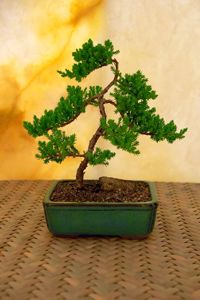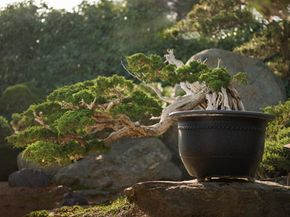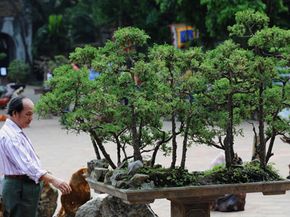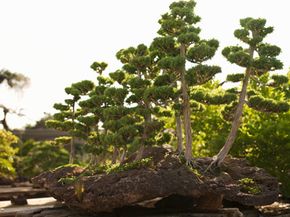Bonsai is the ancient art of discovering and honoring nature by rendering it in miniature. Unlike model trains or dollhouses, bonsai is a living landscape. It is the vision of the bonsai artist applied to a tree, shrub or plant.
In Japanese, bonsai literally means a plant in a tray [Source: USBonsai]. This describes the complex relationship between the bonsai tree and its container, because the right container contributes to the visual harmony the bonsai artist is trying to create. Bonsai captures the true spirit and character of the tree within the confines of a shallow pot.
Advertisement
Imagine a woodland scene. The picture that just flashed into your mind probably brings with it specific sense memories. You may have remembered the sound of birds singing or the feeling of the breeze on your skin. You may have recalled the sound of leaves rustling in the trees or the smell of moist wood and wet earth. These cues add depth to your recollection. Bonsai is like that: A bonsai tree is raised and trained through careful shaping and pruning to recreate the essence of woodlands, meadows or any other natural setting.
At first, this seems like an imitation of nature because it involves wire shaping, drastic root trimming and regular pruning, but the beauty of bonsai is that it is natural. The actual meadow tree or woodland bush is sculpted to bring out its exceptional qualities. Bonsai blends art with horticulture in a way that makes it a satisfying hobby for both the novice and seasoned bonsai enthusiast. It has facets that appeal to the naturalist, plant lover and dedicated artist, and exploring the many facets of bonsai can become a lifelong passion.
In this article, we'll explore the art and craft of bonsai, starting with a glimpse of its historical past.
Advertisement



